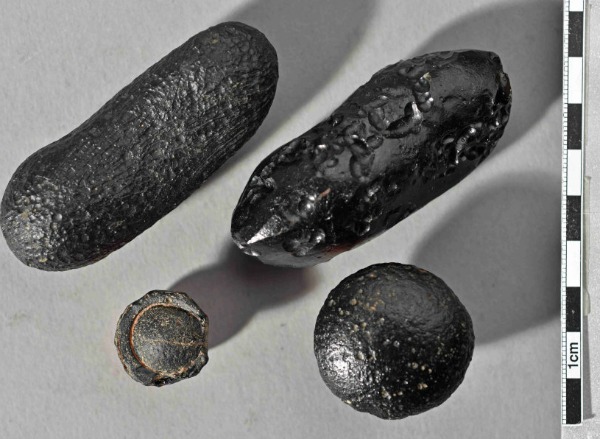
Approximately 790,000 years ago, there were multiple cosmic impacts on Earth with global consequences. That’s according to geoscientists from Heidelberg University who dated what are called tektites, which are glassy stones thought to form during collisions by asteroids or comets with Earth. Mario Trieloff led the research group that studied several tektites from various parts of the world. The Heidelberg scientists employed a dating method based on naturally occurring isotopes, which, they say, let them to date the tektites more accurately than ever before.
Their studies show that tektite samples from Asia, Australia, Canada and Central America are virtually identical in age, although in some cases their chemistry differs markedly. This points to separate impacts that must have occurred around the same time. The results of their research were published in the journal Geochimica et Cosmochimica Acta.
The research group also used isotope measurements to determine the age of craters caused by the impact of extraterrestrial rocks. Mario Trieloff explained:
That’s how we know when, where and how often projectiles struck the Earth, and how big they were.
He said scientists have long believed that a major event of this type took place on Earth about a million years ago. The evidence comes from tektites, which are sometimes called rock glasses. They arise during impact, whereby terrestrial material melts, is hurled up to several hundred kilometers and then hardens into glass. Winfried Schwarz, the study’s primary author, said:
We have known about such tektites for some time from the Australasian region.
She said these rock glasses form a strewn field that stretches from Indochina to the southernmost tip of Australia. Smaller tektites, known as microtektites, were also discovered in deep-sea drill cores off the coast of Madagascar and in the Antarctic.
The rock glasses had been strewn over 10,000 kilometers, with some of them even leaving the Earth’s atmosphere. Using the 40Ar-39Ar dating method, which analyses the decay of the naturally occurring 40K isotope, the Heidelberg researchers succeeded in dating these tektites. Winfred Schwarz said:
Our data analysis indicates that there must have been a cosmic impact about 793,000 years ago, give or take 8,000 years.
The Heidelberg scientists also studied samples from Canada and Central America. The Canadian rock glasses had the same chemical composition and age as the Australasian tektites and could have covered similar flight routes as objects found in southern Australia or the Antarctic. Other finds must first confirm whether the recovery sites are really where the tektites originally landed or whether they for example were carried there by people, according to Dr. Schwarz.
The rock glasses from Central America are also tektites – the first specimens were found at Mayan sites of worship. In the meantime, hundreds of other finds have been made in Central America. Schwarz said:
These tektites are clearly different in their chemical composition, and their geographical distribution also shows that they come from separate impacts. Surprisingly, our age estimates prove that they originated 777,000 years ago with a deviation of 16,000 years.
Within the error margin, this matches the age of the Australasian tektites.
These findings led the Heidelberg researchers to conclude that there were multiple cosmic impacts approximately 790,000 years ago. In addition to the events in the Australasian and Central American regions, a smaller collision at around the same time created the Darwin crater in Tasmania. Schwarz said:
The distribution of the tektites and the size of the strewn field indicate that the Earth-striking body was at least a kilometer in size and released an impressive one million megatons of TNT energy within seconds of impact.
According to the scientists, the consequences were dire.
At the local level, there was fire and earthquakes for hundreds of kilometers surrounding the impact site; an ocean impact would have caused tsunamis hundreds of meters high. At the global level, dust and gases were ejected into the upper levels of the atmosphere, blocking sunlight and lowering surface temperatures. Biomass production was also affected, although according to the scientists it did not result in global mass extinction as in the case of the dinosaurs approximately 65 million years ago.
Bottom line: A group of geoscientists from Heidelberg University recently used a new dating technique to show that glassy stones known as tektites found in various parts of the world came from multiple cosmic collisions between Earth and space objects approximately 790,000 years ago.











